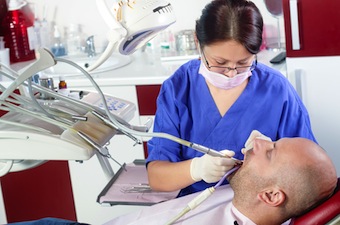The Secret to Reliable Practice Growth
In a recent article, I outlined the value of a patient’s average treatment over 20 years, which is an eye-opening exercise for many practitioners.
Capturing that full value is not difficult — in fact, it can be seized by any practice that observes some basic rules of patient management. It all starts with recognizing that hygiene care is as important as any restorative treatment performed in the practice. It represents treatment essential for foundational oral health.
How highly do you and the team — and patients — value hygiene care? It’s one thing to say that you diligently keep up with each patient’s hygiene schedule and remind them of their appointments. However, there are some clues to look for that suggest you’re not projecting the value you want to for this service that provides the backbone of your practice.
For instance:
1. Do you still refer to appointments as “cleanings” rather than clinical hygiene care? This may seem like simple semantics, but your language sends an important message. Cleaning is what they do at home; what your hygienists provide is a necessary professional treatment.
2. Do you find that patients are much more likely to cancel or reschedule a hygiene appointment than a visit for restorative treatment? This is an indication that they’ve been trained to see hygiene care as something not worthy of the same level of commitment.
3. If a patient’s insurance plan switches from, for example, a six-month to nine-month coverage for hygiene treatment, do you passively accept that as the new reality and adjust their schedule to match the coverage?
Given that hygiene care is the most affordable treatment in a dental practice, the only explanation for why patients and practices behave in this way is that neither established the right value for ongoing care.
On the other hand, practices that master this foundational expertise and communicate the value of hygiene in every patient interaction usually enjoy a steady trajectory of practice growth just by sticking to the fundamentals. In fact, they often grow so quickly that they exceed the ability of the dentist to keep up with the clinical needs that are diagnosed in the hygiene chairs, making it necessary to bring in another dentist to keep up with demand.
Attention to detail on the things that drive everyday productivity makes good practices great.
SPEAR NAVIGATOR
Transform how your practice runs by engaging the team through
coaching and training
A guided path to excellence through structured coaching and self-guided resources that will align your team, streamline processes and drive growth. Transform your practice by implementing Spear’s proven playbooks for developing and retaining a high-performing dental team.

By: Imtiaz Manji
Date: May 12, 2014
Featured Digest articles
Insights and advice from Spear Faculty and industry experts



